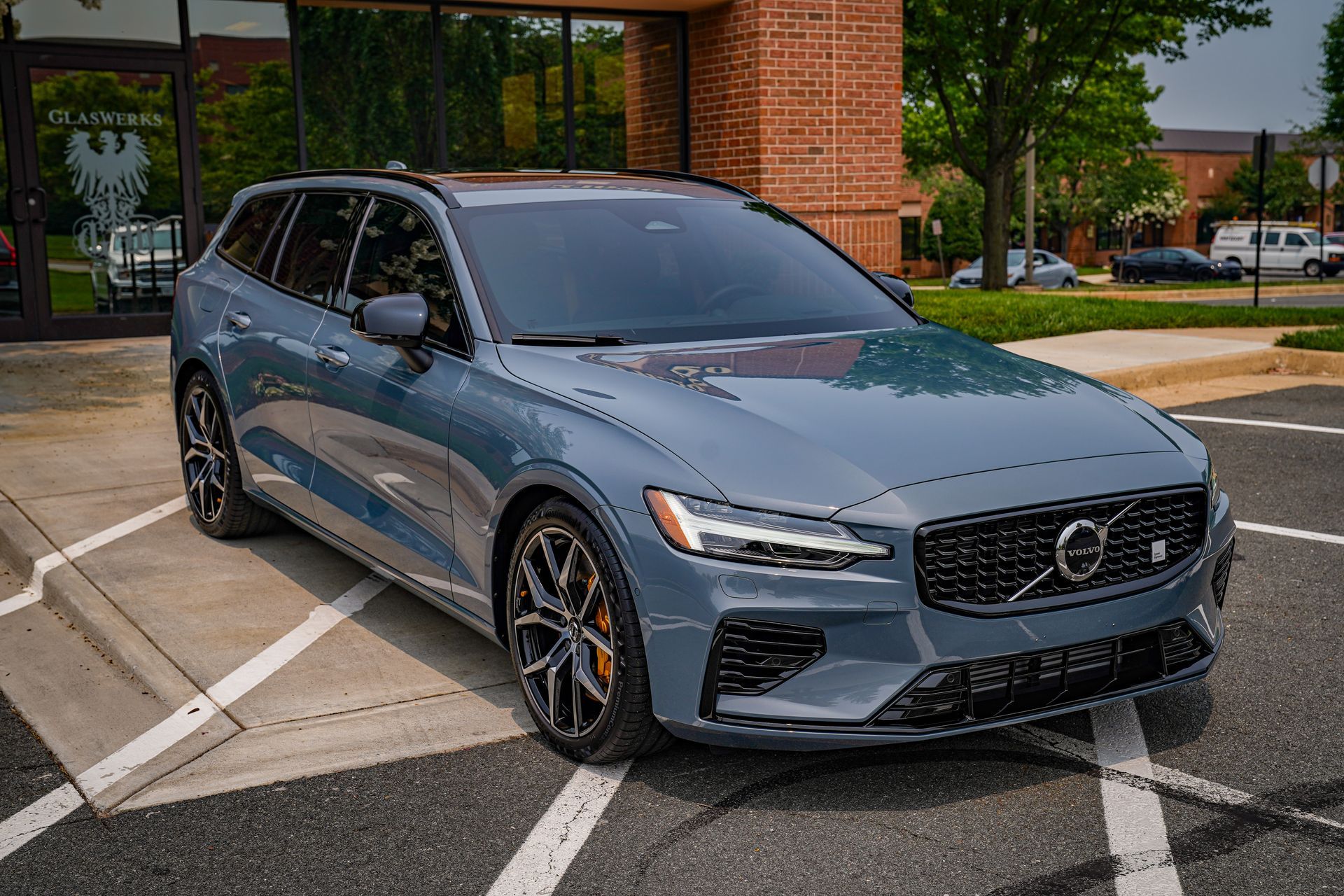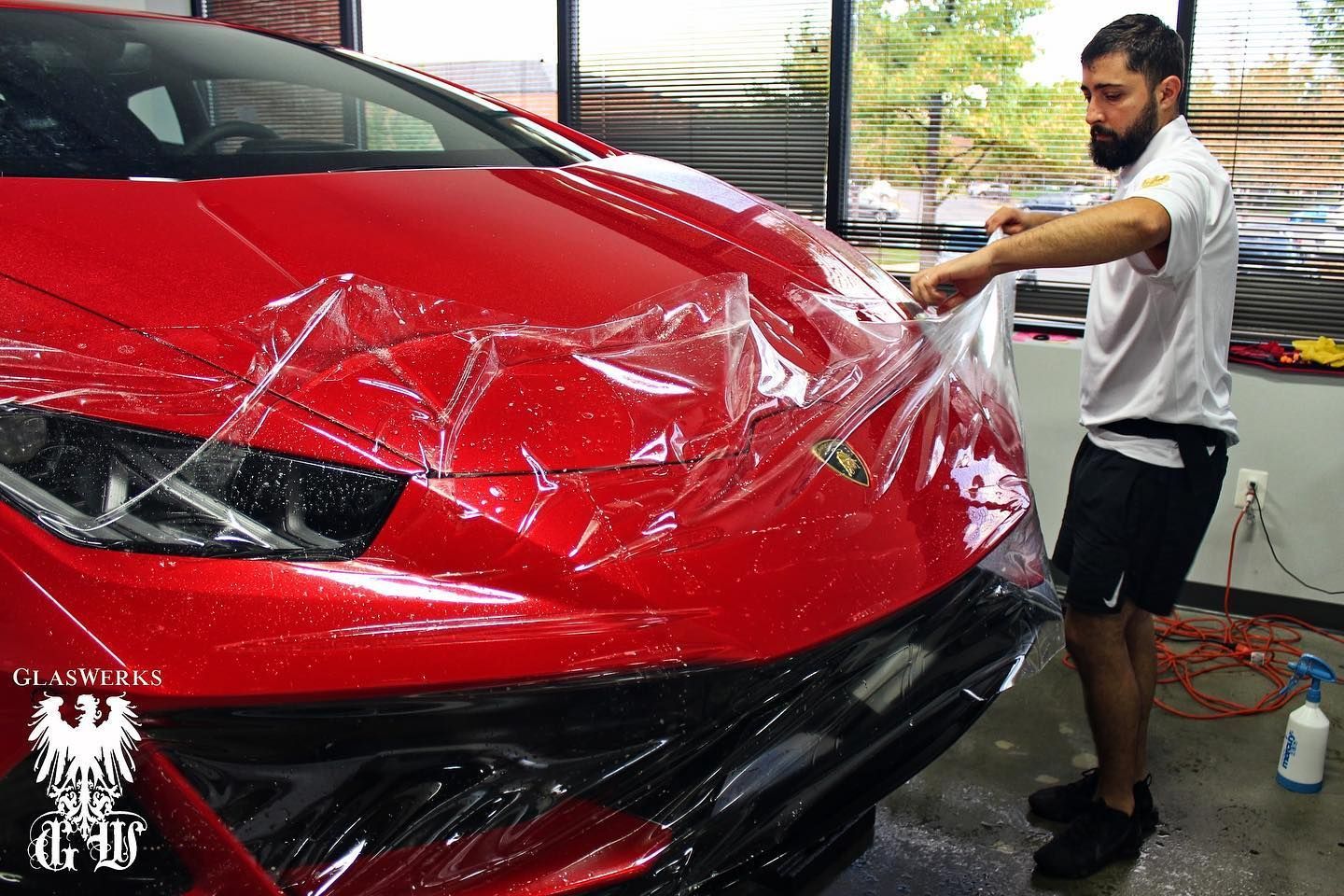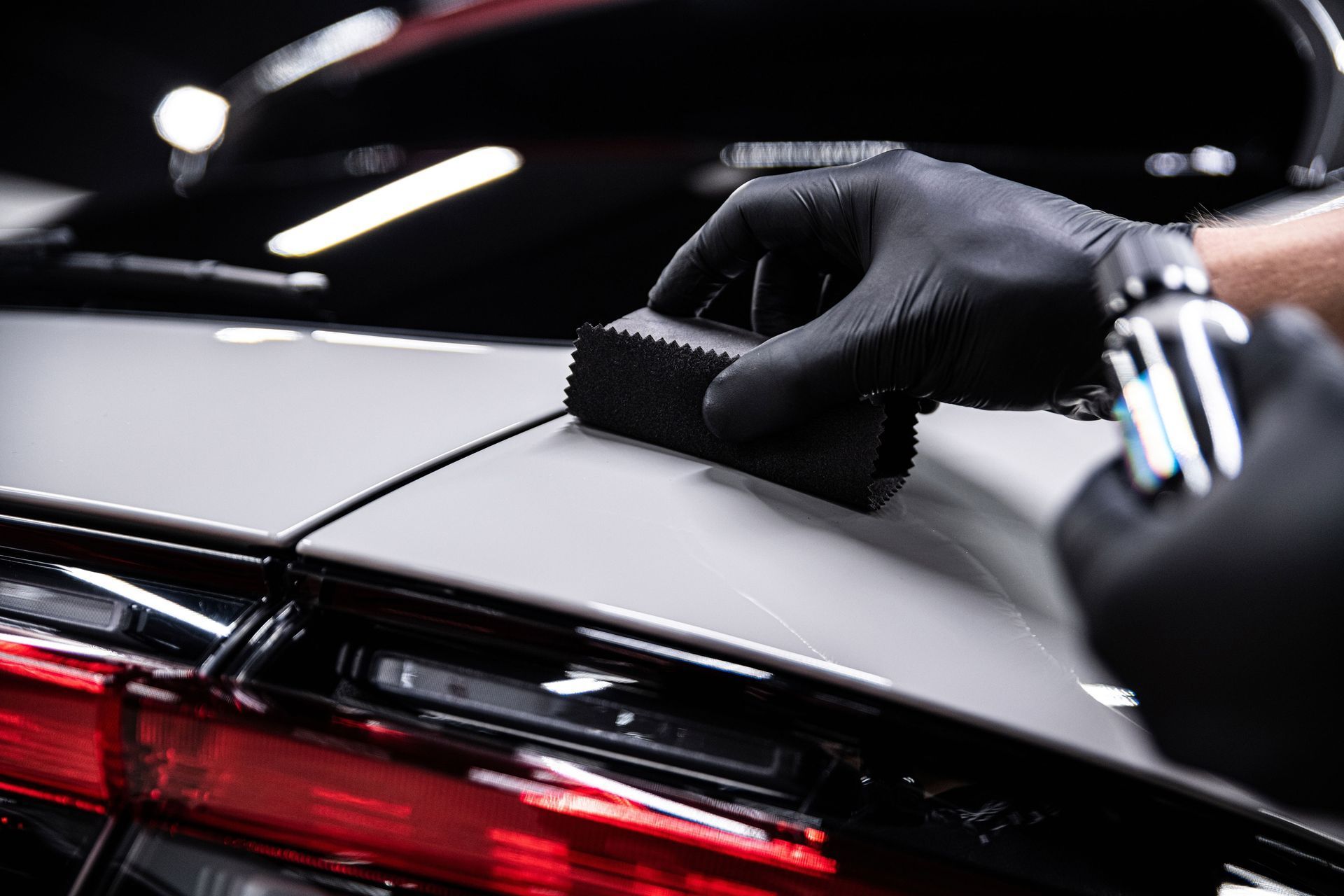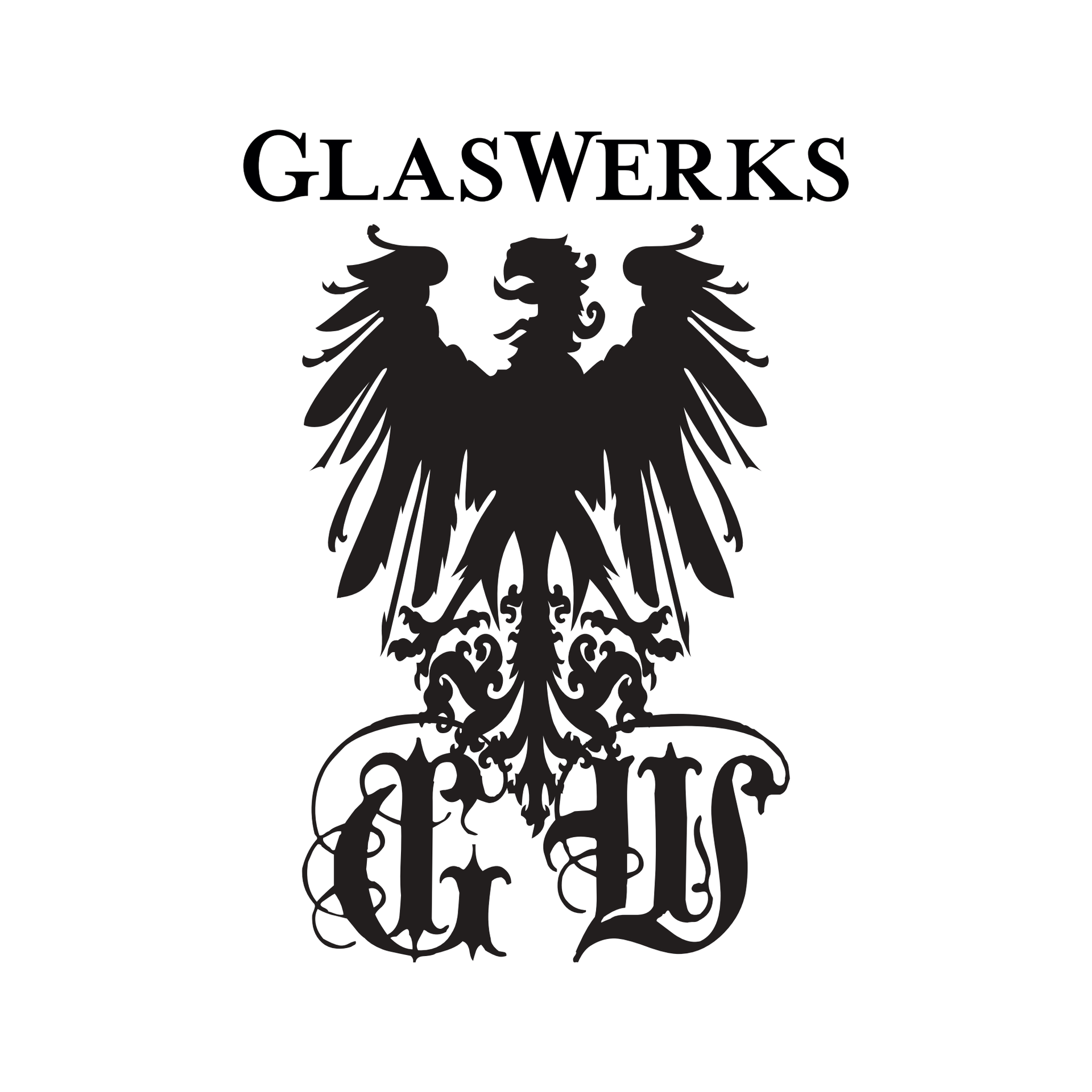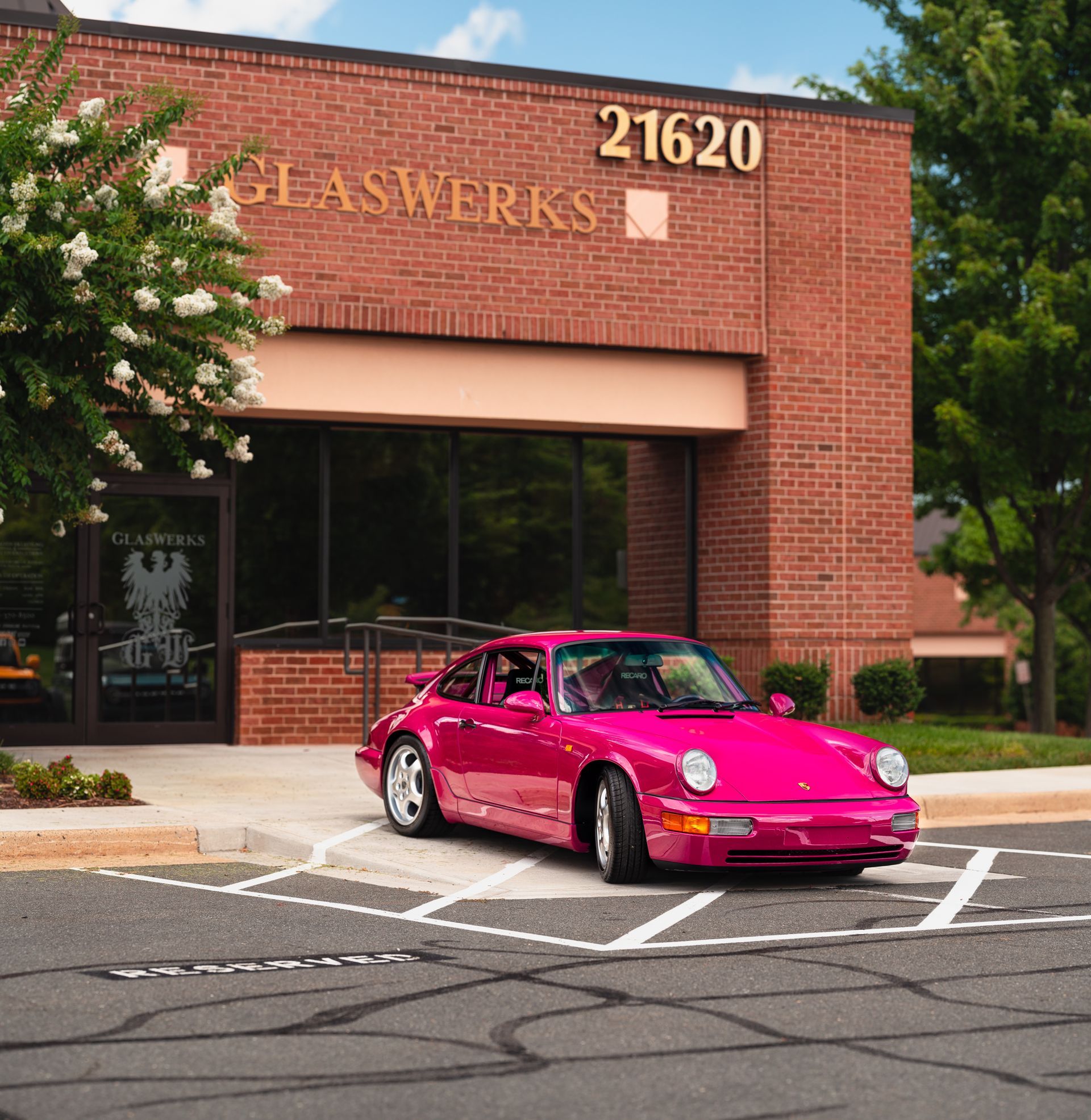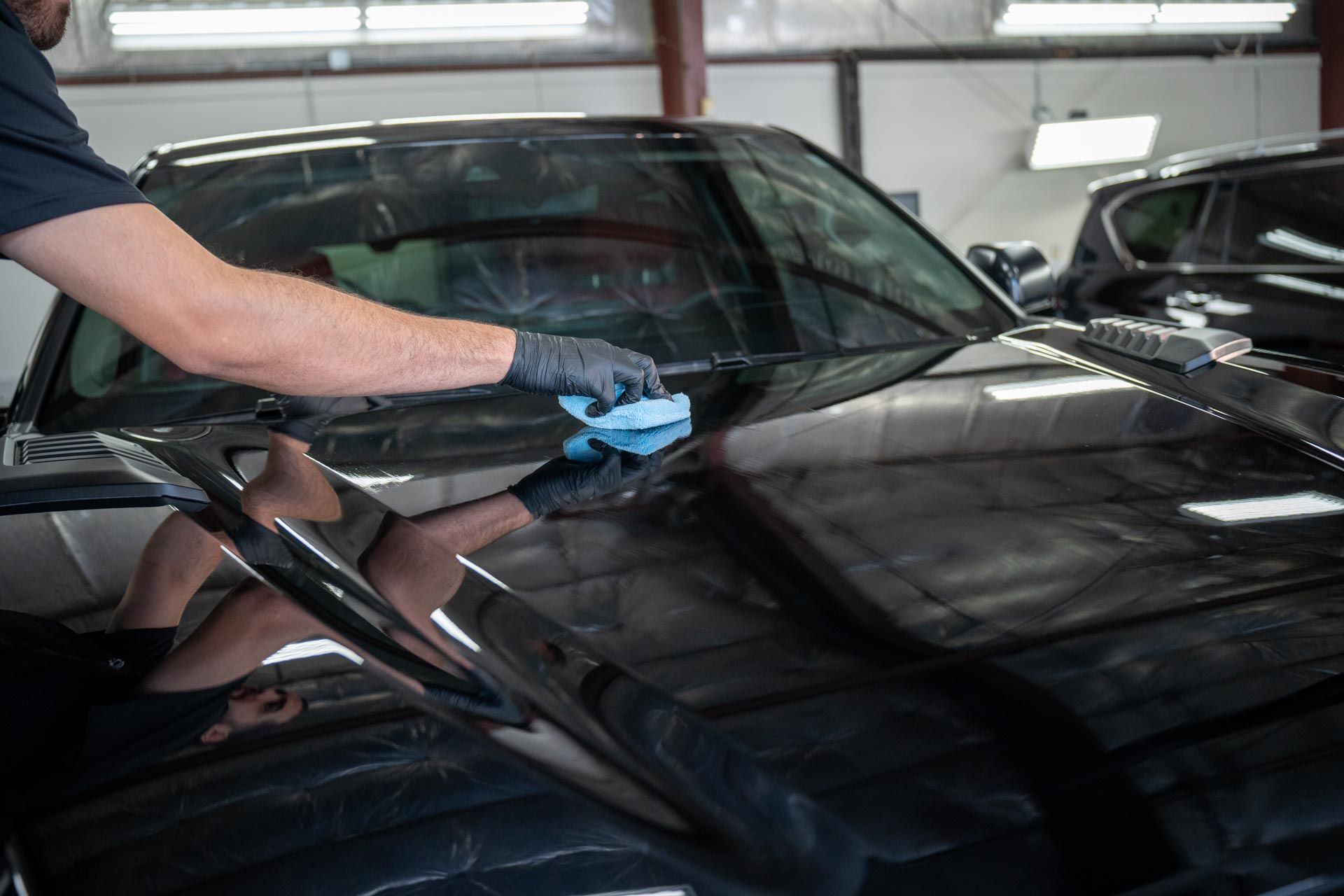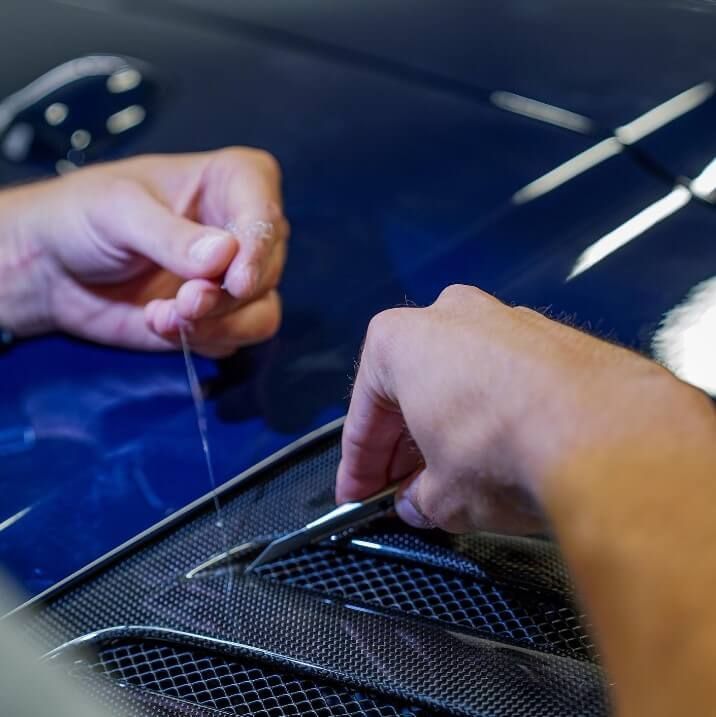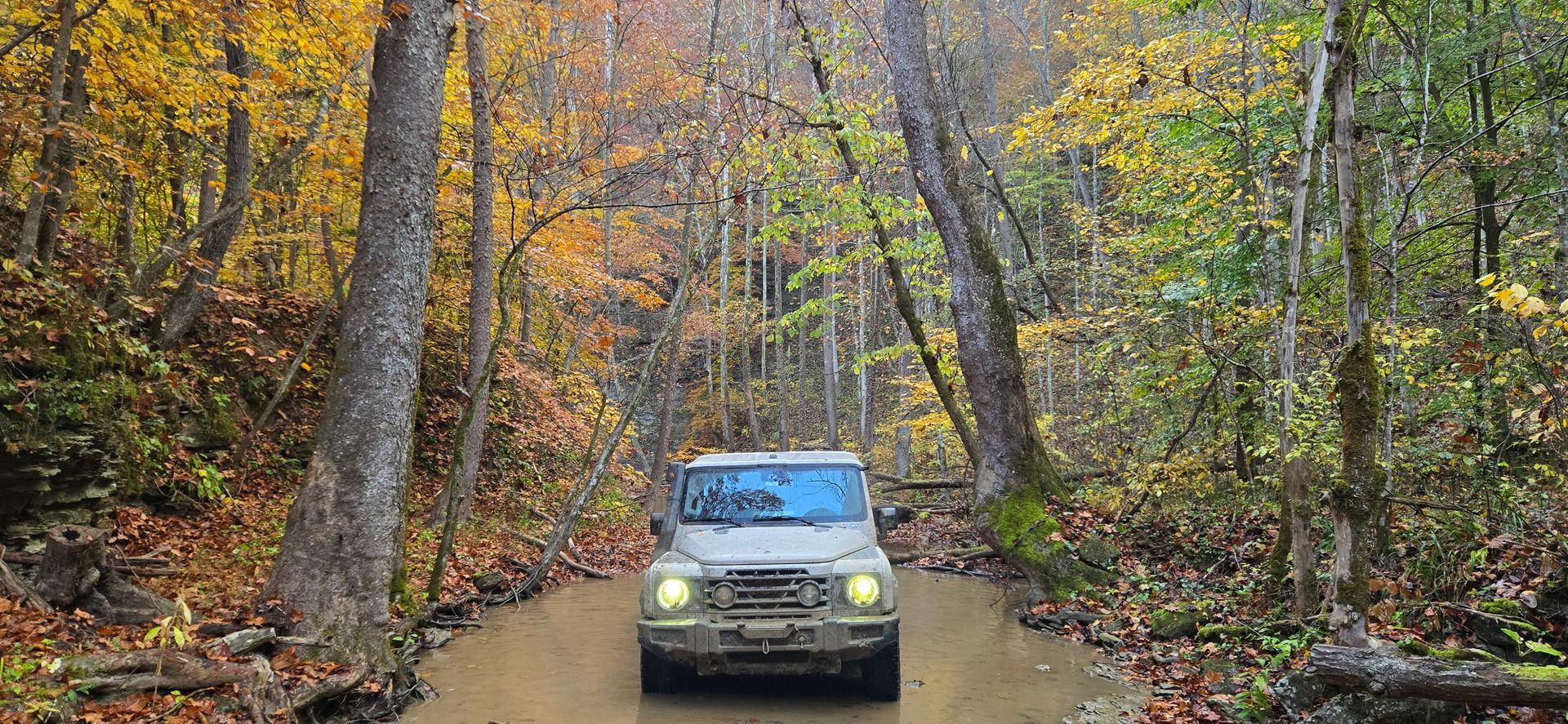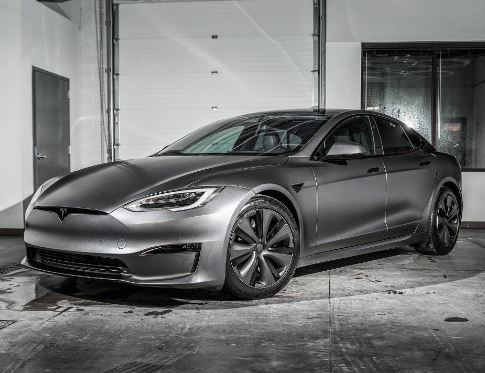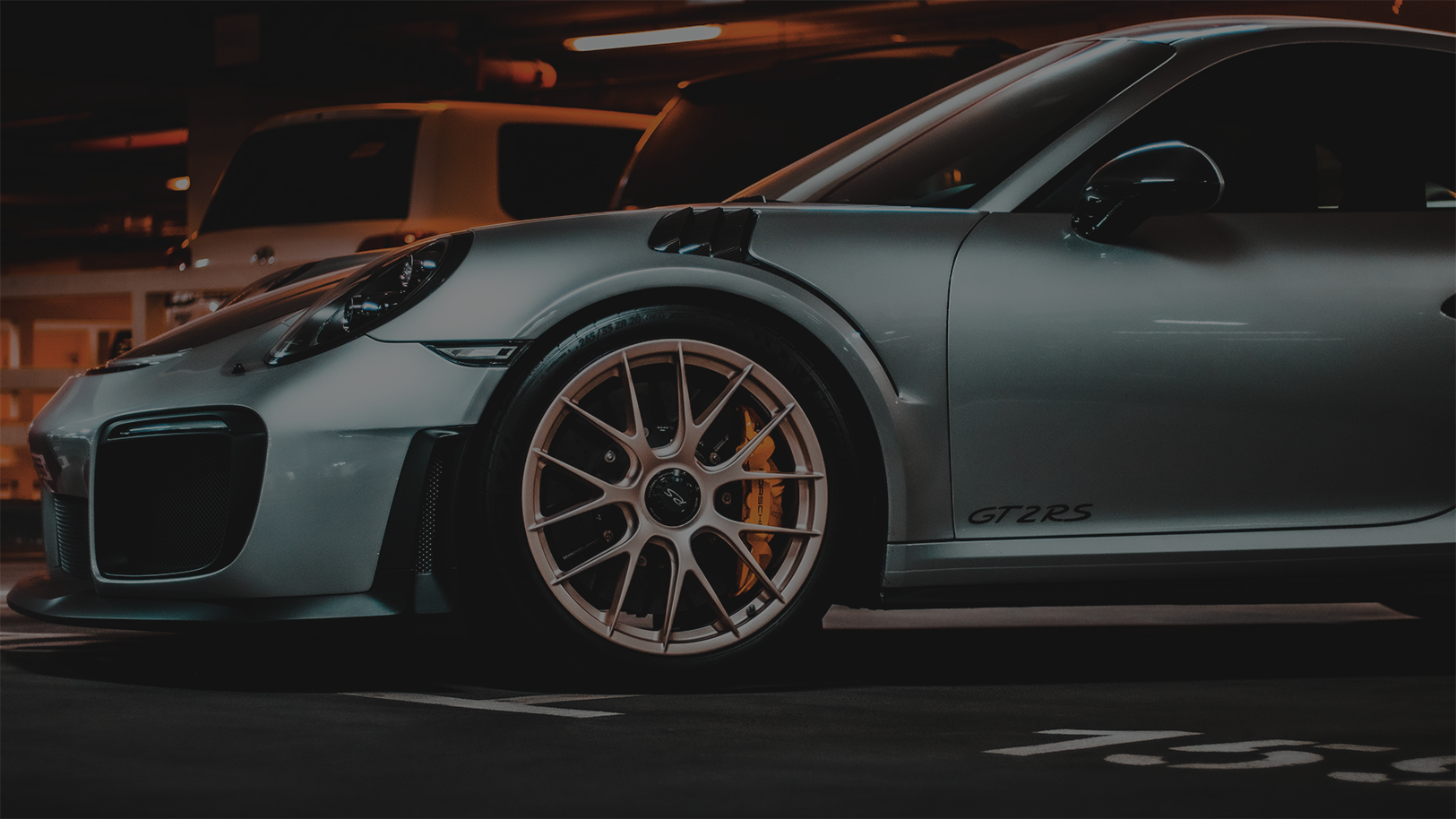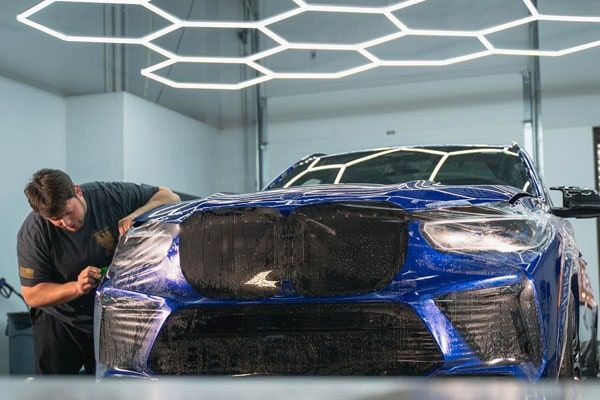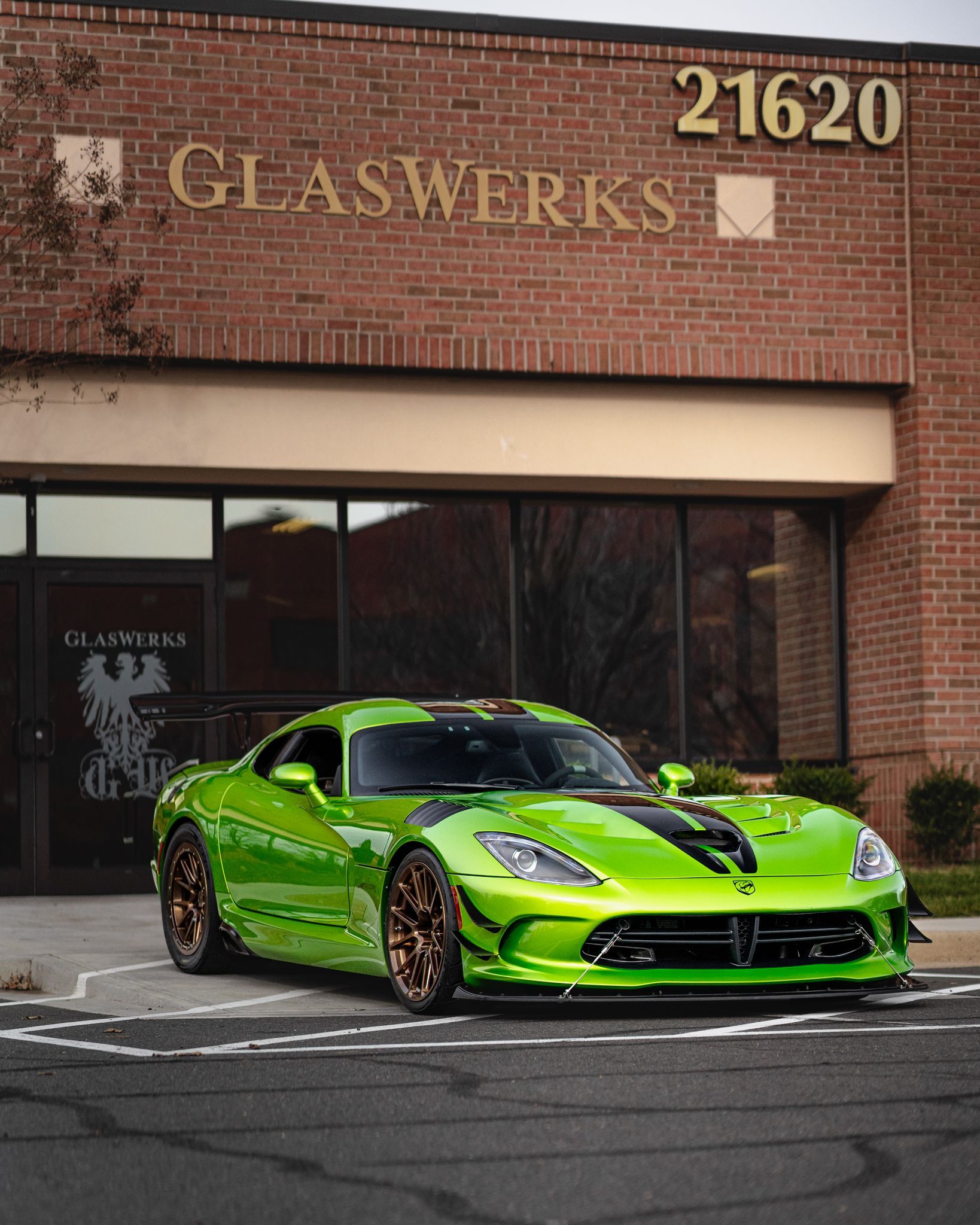When it comes to keeping your car looking fresh, many drivers find themselves juggling choices between Paint Protection Film (PPF) and ceramic coatings. It’s a common dilemma: Do you protect your vehicle with a thick layer of film that shields against scratches and chips, or do you opt for a sleek liquid coating that enhances shine and makes cleaning easier? Each option has its advantages, but understanding what sets them apart is key to making the right decision. In this article, we’ll break down the differences between PPF and ceramic coatings, helping you navigate the best choice for your ride. Whether you want maximum protection for life on rugged roads or an effortless approach to maintaining that polished look, there’s a solution waiting for you. Let’s dive in!
Paint Protection Film (PPF) is a thicker urethane material that offers physical protection from rock chips, scratches, and environmental damage, while ceramic coatings are liquid polymers that bond chemically to paint surfaces providing enhanced gloss and hydrophobic properties. The choice between PPF and ceramic coating depends on your specific needs; for comprehensive physical protection, PPF is superior, whereas for a lower-maintenance option with easier cleaning capabilities, ceramic coatings may be preferable. For optimal results, consider using both products in combination.
PPF vs. Coating: What's the Difference?
At its core, the difference between Paint Protection Film (PPF) and ceramic coatings lies in their material composition and protective capabilities. PPF is a transparent thermoplastic urethane film that is substantially thicker than ceramic coatings. This added thickness isn't just for show; it serves a purpose. PPF's primary job is to absorb impacts, making it particularly effective against rock chips, scratches from branches, and even certain chemical stains that might come into contact with your car during daily use. It's akin to wrapping your vehicle in a protective layer of armor.
On the flip side, ceramic coatings are liquid polymers that bond directly with the vehicle's paint. They form a strong yet thin layer that creates a hydrophobic surface, which is incredibly beneficial when it comes to cleaning and maintenance. This hydrophobic property means water beads up and rolls off the surface, taking dirt and grime with it, thus making washing your car much simpler. However, they don’t provide much protection against physical damage like PPF does; while they reduce the risk of UV degradation and can resist minor abrasions or stains, they won't absorb the force of direct impacts like flying stones.
In essence, you can think of PPF as a shield that stands firmly between your paint and potential damage. It absorbs shocks and prevents nuances like swirl marks or fading paint that happens over time due to environmental factors. Ceramic coatings, however, are more about enhancing appearance while offering a layer of protection against light scratching and UV rays—a sort of glorified varnish for your vehicle’s surface.
Understanding these distinctions will help you make informed choices based on your driving habits and environment. If you frequently traverse rough terrains or are often parked near areas where road debris could fly up, PPF is likely your best bet for comprehensive coverage. Alternatively, if that's not a concern but you want to retain that new-car shine and ease of cleaning—ceramic coating is an attractive option.
Employing both methods could provide optimal protection for vulnerable areas first with PPF, followed by a ceramic coating overall—a strategically layered defense for those who seek durability without sacrificing aesthetics. With this foundation laid out regarding protective options for your vehicle, let’s move ahead to explore what makes Paint Protection Film standout in terms of features and benefits.
Key Features of Paint Protection Film
Paint Protection Films come packed with impressive characteristics, usually measuring between 6 to 8 mils in thickness—about the same as the thickness of a credit card. This robustness translates into significant protection for your car's paint, but that's just the beginning.
- Self-Healing Properties: One of the most remarkable aspects of PPF is undoubtedly its self-healing capability. Picture this: you've parked your shiny new car only to return and find a small scratch caused by a careless shopping cart. Instead of sinking into despair, you simply expose that area to some heat, whether from sunlight or warm water, and watch as those minor abrasions vanish like magic. This property is a game changer, allowing your vehicle to maintain its pristine appearance without constant touch-ups.
- Physical Protection: Think of PPF as a transparent shield over your car's paint, absorbing impacts from rocks, bird droppings, and even minor collisions. It's like having an invisible bodyguard for your vehicle! By applying PPF to high-impact areas such as the front bumper, hood, and side mirrors, you protect those vulnerable spots that are prone to daily wear and tear. Many users report significantly fewer paint chips after installing PPF in these critical zones.
- Durability: When investing in PPF, you're not just getting a short-term solution; it generally lasts between 5 to 10 years based on its quality and how well you maintain it. Premium brands like XPEL Ultimate even offer warranties that align with their durability promises. This longevity means you won't have to think about reapplication anytime soon.
With proper care—including regular washing and avoiding harsh chemicals—you can extend the lifespan of your PPF further while still enjoying its many benefits. Taking good care of this protective layer not only preserves your car’s aesthetic but also its value! The unique features of PPF illustrate why it has become a top choice among car owners looking to safeguard their investments. As one explores protection options, it's vital to understand what ceramic coatings bring to the table next.
Key Features of Ceramic Coatings
Ceramic coatings serve as a formidable layer of protection that goes beyond merely enhancing a vehicle's aesthetic appeal. While their primary purpose lies in preserving your car’s exterior, they also play a significant role in reducing long-term maintenance efforts. Picture this: you've just washed your car, and it gleams under the sun—this is thanks to the glossy finish created by ceramic coatings, which amplifies the depth of the paint color and makes it look vibrant. But there's so much more beneath that stunning shine.
- Hydrophobic Properties: One of the standout attributes of ceramic coatings is their hydrophobic properties. This feature essentially means that these coatings repel water, causing it to bead up and roll off effortlessly. When it rains or if you accidentally splash water on your car, you will see how effectively the liquid slides right off, along with any dirt or grime that's accumulated. It’s almost like your vehicle gets its very own raincoat! Beyond mere convenience, this property significantly reduces the frequency and effort required for cleaning. With traditional waxes or sealants, dirt tends to stick to the surface, necessitating frequent scrubbing while washing. However, with ceramic coatings, maintaining that shine becomes far less labor-intensive because the dirt doesn’t adhere as readily. So, when it comes time for a wash, you can save yourself a considerable amount of frustration.
- Ease of Cleaning: Another remarkable advantage of these coatings is how much easier they make cleaning your vehicle. Thanks to those hydrophobic features we discussed earlier, surfaces become slick enough that even stubborn grime struggles to stick around. When it's time for maintenance, a simple rinse or wash often restores the original shine without needing intense scrubbing. That being said, regular washes are still necessary to maintain optimal performance. The good news? You won’t find yourself dreading this task! Instead of grappling with hardened gunk or debris stuck on your car's surface, you'll simply enjoy watching dirt wash away effortlessly.
With a little insight into how ceramic coatings work and their multiple benefits, you'll be better equipped to protect your investment and keep your vehicle looking fresh for years ahead. As we explore further aspects of vehicle protection and maintenance, understanding how each process unfolds provides clarity on optimal choices available to every car owner.
Application Processes Explained
Paint Protection Film Application
To start the journey of safeguarding your car with Paint Protection Film (PPF), surface preparation is crucial. The paint must be thoroughly cleaned, ensuring there’s no dust, grease, or wax that could interfere with adhesion. Sometimes, polishing the surface is necessary to eliminate imperfections that might show through the film. Think of it as preparing a canvas for painting; every spot matters.
Once the surface is immaculate, film application follows. The PPF can either be pre-cut or custom-fitted for your specific car dimensions. This step often employs a slip solution—a mix of water and soap—which allows installers to reposition the film on the vehicle until it's just right. Imagine laying down a delicate sheet of plastic over a work of art; precision is key here. Naturally, with any application comes the squeegee process, where a squeegee serves to remove trapped air bubbles and excess solution from beneath the film. This part ensures a smooth finish that will not only look great but also function effectively against chips and scratches.
Ceramic Coating Application
When it comes to applying ceramic coating, surface preparation plays an equally important role as with PPF. The clean surface is essential for optimal bonding between the coating and the paint. In many cases, professionals may employ clay bars during this stage to remove stubborn contaminants embedded within the clear coat—think of it as exfoliating your skin before applying moisturizer!
Following this meticulous cleaning, we move on to the application stage. Here, the ceramic coating is meticulously applied in small sections using an applicator pad. Patience is vital here, as each section needs attention to detail to ensure even coverage without leaving streaks or runs. Approximately 30 minutes after application, it's advisable to level out the coating using a microfiber towel; this helps to remove any excess product and ensures a polished final look.
Lastly, we cannot overlook the critical curing period needed for ceramic coatings. Typically lasting 24-48 hours, during this time it's imperative to keep the vehicle dry and avoid exposure to moisture, which can hinder proper bonding. This phase solidifies your investment by fortifying your car’s paint against contaminants. With such detailed processes in mind, understanding how each step protects your vehicle can significantly inform your strategy when choosing between these two protective options. As you consider what goes into installing these coatings and films, a deeper analysis of costs and longevity will come next.
Comparing Costs and Durability
When it comes to investing in the longevity of your vehicle, understanding the financial implications of Paint Protection Film (PPF) and ceramic coating is vital. The initial expenses can be steep, but when you consider the long-term benefits, it's a cost worth evaluating. For instance, PPF applications typically range from $2,000 for partial coverage to an eye-watering $10,000 for full coverage, making it a significant investment. On the other hand, ceramic coatings tend to be somewhat more budget-friendly, with costs ranging from $1,000 to $3,000 depending on the specific brand and how complex the application process might be.
However, price is just one side of the coin; how long these protective methods last is equally important. While PPF generally lasts between five to ten years, offering robust protection against physical damage like rock chips and scratches, ceramic coatings have a shorter lifespan of two to five years.
Despite this difference, both options require regular upkeep to ensure they perform effectively over their respective lifespans.
Deciding Which Is Right for Your Vehicle
The decision between Paint Protection Film (PPF) and ceramic coatings hinges on multiple factors that cater to your unique driving habits and aesthetic preferences. Start by reflecting on how you use your vehicle daily. If you often drive on highways or navigate through rough terrains, PPF emerges as the strong leader in this debate. With its ability to absorb impacts from road debris like rock chips and minor collisions, it serves as a robust shield for your car's paint.
Imagine driving down a gravel road; every pebble becomes an adversary against the pristine surface of your ride. In this context, PPF acts like a suit of armor, ensuring your vehicle withstands frequent exposure to harsh conditions. On the other hand, if you prioritize aesthetics and ease of maintenance, ceramic coatings might catch your eye more readily. Ceramic coatings offer a sleek, glossy finish that enhances the look of your vehicle while providing a hydrophobic effect that makes cleaning effortless. For city dwellers or those who keep their cars parked in bustling urban environments, this could be especially appealing.
Picture a sudden rain shower—while others scramble to wipe down their vehicles, you simply watch as water beads up and rolls off like tiny pearls. That radiant shine requires minimal effort to maintain, making ceramic coatings an ideal choice for those who desire beauty combined with convenience. Yet, we must also consider practical aspects such as budget constraints.
If finances are a factor, ceramic coatings are generally more economical, offering solid protection from UV light and environmental contaminants at a lower investment than PPF. While both options come with their price tags, it's essential to evaluate the long-term benefits versus upfront costs. Think about how much you value your car's appearance over time; sometimes spending less now may lead to higher maintenance expenses later on.
Personal experiences also play a vital role in this decision-making process. Many users have echoed similar sentiments: combining both PPF and ceramic coatings results in a well-rounded protective strategy. Applying PPF strategically to high-impact areas such as the front bumper and hood defends against physical threats while extending the life of the underlying paintwork. Following that up with a ceramic coating on the rest of the car can give you peace of mind knowing that it remains protected from external elements while showcasing an attractive finish.
This balanced approach offers comprehensive protection while preserving the aesthetic allure of your vehicle—a fusion of endurance and elegance that many car enthusiasts aspire toward. By contemplating these various elements, you can make an informed decision that fits perfectly with your lifestyle and vehicle care goals.
In summary, whether you choose PPF, ceramic coatings, or a combination of both depends largely on how you intend to use and maintain your vehicle. Finding the right balance between protection and aesthetics will guide your decision effectively.
Premium PPF and Ceramic Coating Services in Sterling, VA
At GlasWerks DMV in Sterling, VA, your vehicle receives the highest level of protection through expertly installed paint protection film and advanced ceramic coating solutions. Our team combines precision craftsmanship with cutting-edge materials to defend against rock chips, UV damage, and harsh weather—while enhancing gloss and ease of maintenance. Whether you're preserving a brand-new finish or safeguarding a weekend cruiser, GlasWerks DMV ensures your car stays showroom-worthy with every mile.
